Physical Address
304 North Cardinal St.
Dorchester Center, MA 02124
Physical Address
304 North Cardinal St.
Dorchester Center, MA 02124
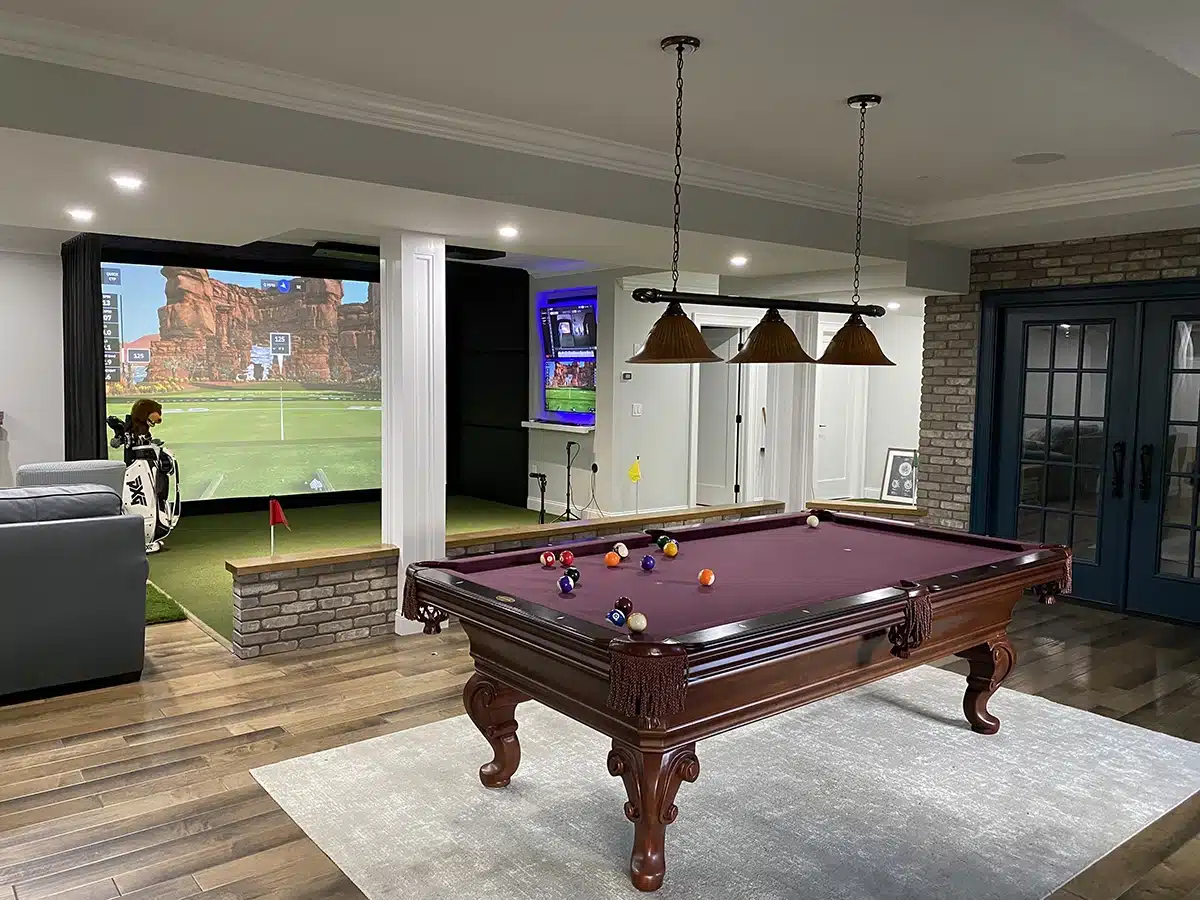
Transforming your basement into a golf simulator space is one of the best ways to practice year-round, improve your game, and enjoy playing on world-class courses from the comfort of home.
However, building a basement golf simulator requires careful planning to ensure you have enough space, the right equipment, and an optimized setup for the best experience.
Many golfers underestimate how much room they need, especially when it comes to ceiling height, width, and depth. Choosing the right launch monitor and simulator package also plays a crucial role in creating a setup that fits your space while delivering an accurate and immersive experience.
This guide will break down everything you need to know, from space requirements to the best simulators for different basement setups.
Before investing in a simulator, it’s important to measure your basement to ensure it meets the minimum space requirements. The three most critical factors are ceiling height, room width, and room depth.
Ceiling height is often the biggest limiting factor. A golf simulator setup requires enough clearance for a full swing with all clubs, especially the driver. Most golfers need at least 9 feet of ceiling height, but taller players or those using longer clubs may need 10 feet or more. If the ceiling is lower, consider using shorter clubs or focusing on mid-iron and wedge practice.
Room width affects how comfortable the simulator will be, especially for golfers who swing with a wider arc. A minimum of 12 feet provides enough room for a single player to swing freely without feeling cramped. If multiple golfers will be using the simulator, or if both right- and left-handed players will be switching off, 15 feet or more is ideal to prevent constant repositioning.
Room depth determines how well the simulator will track ball flight. Camera-based launch monitors like the SkyTrak+ and Uneekor EYE MINI Lite require about 12 feet of depth, as they track impact data rather than full ball flight.
Radar-based monitors like TrackMan iO need 16 feet or more since they track the ball as it moves through the air. If depth is an issue, a camera-based system is a better choice for basement setups.
Choosing the right simulator for your basement depends on the available space, the level of realism you want, and whether you need a permanent or flexible setup. Here are some of the best options for different basement configurations.
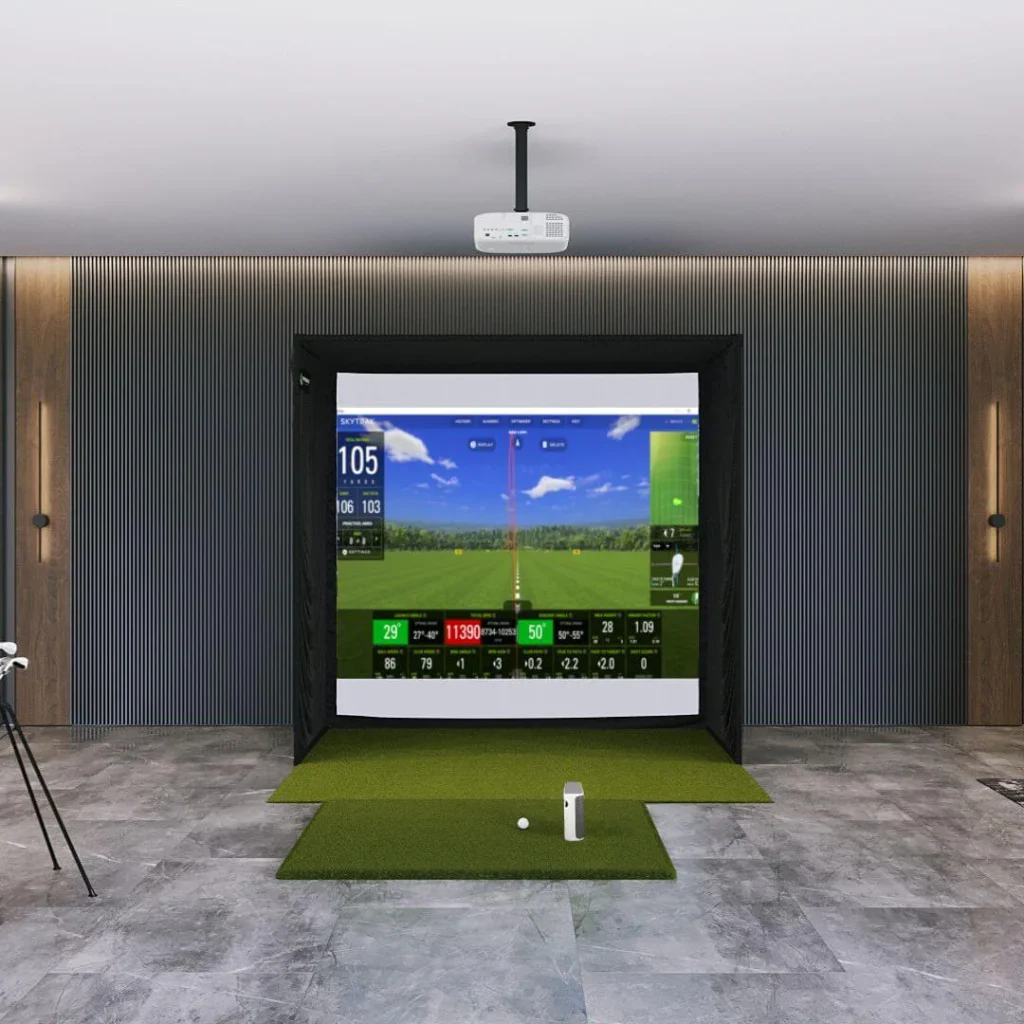
For a balance of accuracy, affordability, and ease of setup, the SkyTrak+ SIG8 Golf Simulator is one of the best choices for basement use. It features camera-based tracking, allowing it to function in smaller rooms without requiring extra depth.
With a minimum space requirement of 12 feet wide, 9 feet high, and 12 feet deep, it works well in most home basements. The simulation software provides realistic graphics, and the system is compatible with FSX Play, E6 Connect, and GSPro, offering a variety of virtual courses. This setup is ideal for golfers looking for a high-quality simulator that doesn’t require an extensive footprint.

If space is extremely limited, the Uneekor EYE MINI Lite SIG8 Golf Simulator is a compact, high-accuracy system that fits into tighter spaces without sacrificing performance. Unlike radar-based simulators, it uses a camera-based tracking system, allowing it to function effectively in rooms as narrow as 10 feet wide.
With a ceiling height of at least 9 feet and depth of 12 feet, it provides a great solution for golfers with space constraints. The EYE MINI Lite tracks both ball and club data, helping players fine-tune their swing mechanics with detailed feedback. Its compatibility with GSPro and E6 Connect makes it a strong choice for those wanting a high-quality simulation experience in a small footprint.
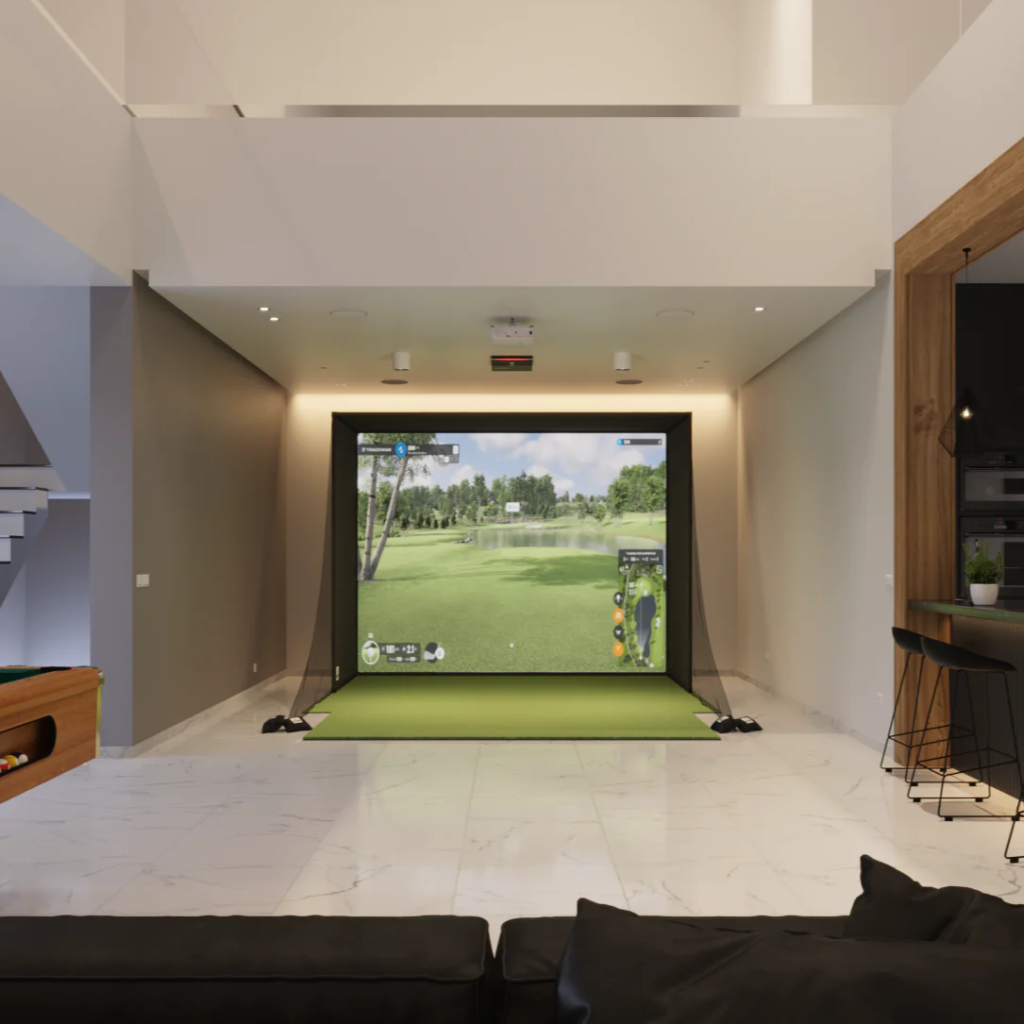
For golfers who want an immersive, high-end experience, the TrackMan iO SwingBay Golf Simulator delivers tour-level accuracy and some of the best course simulations available. The dual radar and infrared tracking system provides exceptional shot data, making it a favorite among professionals and serious players.
This simulator requires a minimum depth of 15 feet, making it better suited for basements with more space. The software offers high-resolution course renderings, allowing players to experience the same visuals and conditions as they would on a real course. If maximizing realism is the goal, TrackMan iO is one of the best choices available.
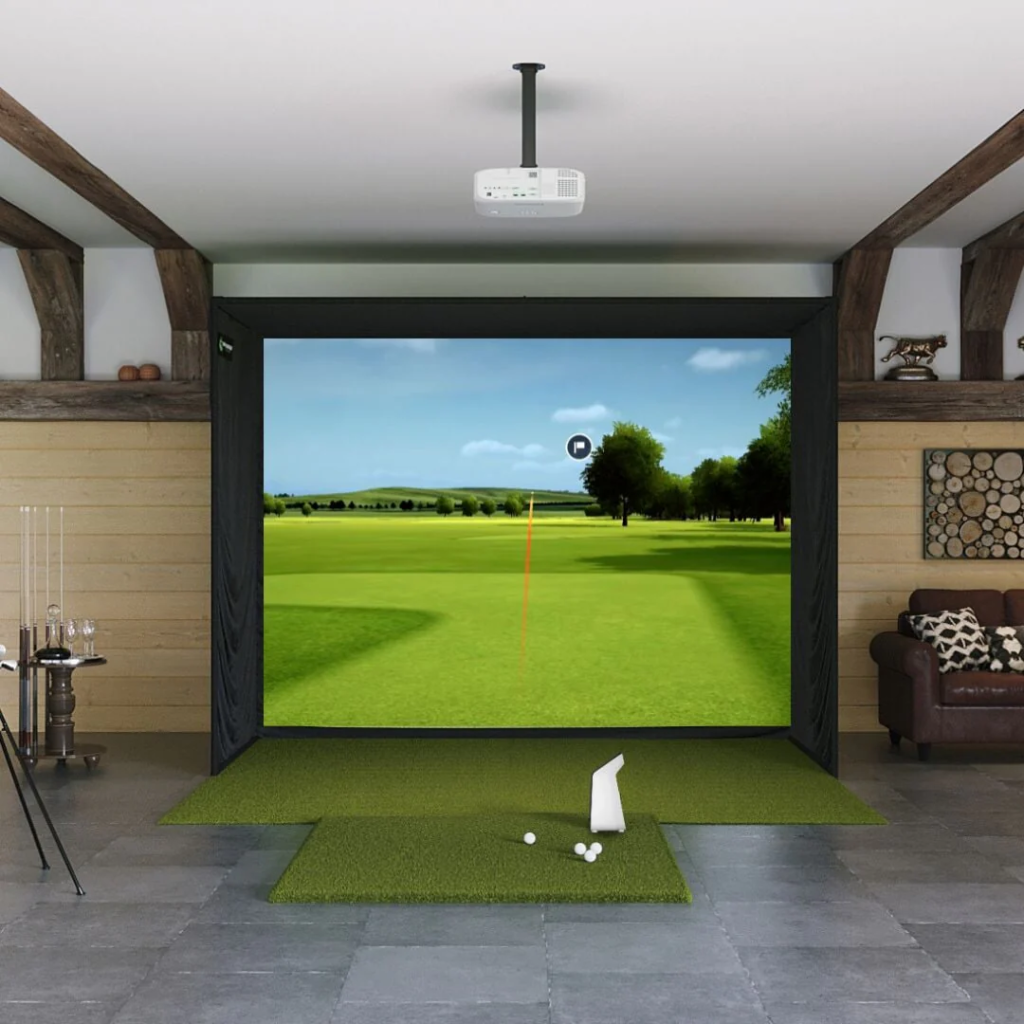
For golfers who need a simulator that can be stored away when not in use, the Garmin Approach R50 SIG10 Golf Simulator is a highly flexible option. The retractable screen allows users to transform their basement space into a simulator when needed, while keeping the area open for other activities.
This setup works best in basements with at least 14–16 feet of depth, as it uses radar-based tracking. The system provides detailed swing analysis and real-world ball flight tracking, making it a strong option for golfers who want accurate feedback without permanently dedicating their entire basement to a golf setup.
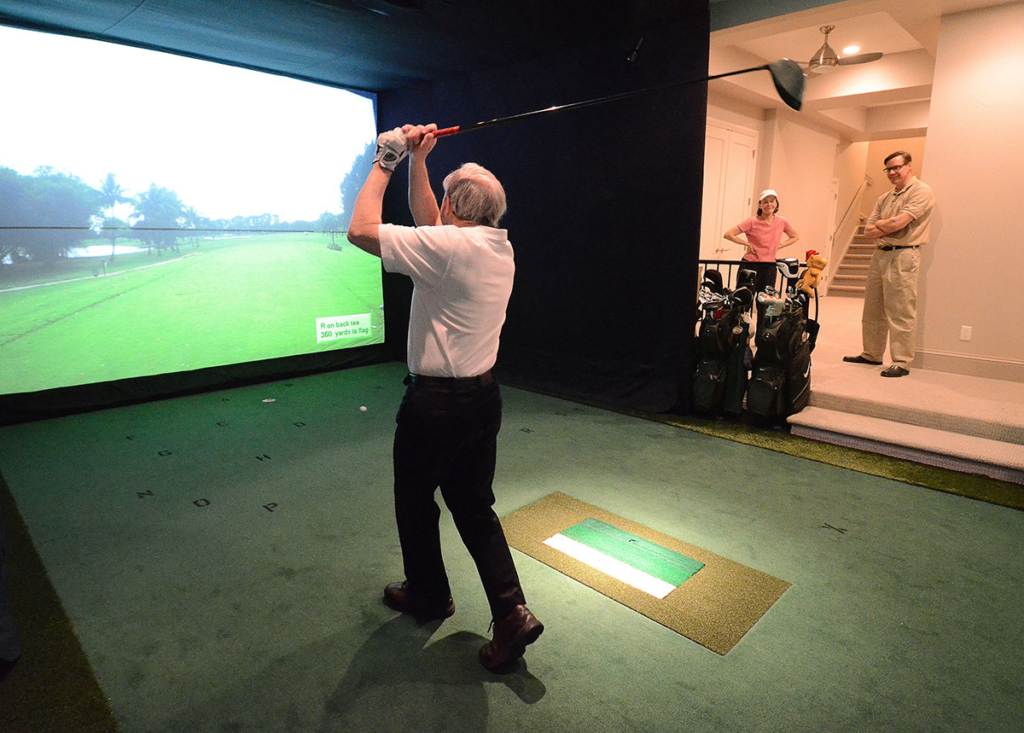
Proper lighting is essential for launch monitors to function correctly. Camera-based systems like SkyTrak+ and Uneekor work best in well-lit rooms, while radar-based systems like TrackMan and Garmin require minimal light interference. Adjustable LED lighting can help optimize conditions for different simulator types.
A hitting mat with shock absorption is necessary to protect both the golfer’s joints and the basement flooring. Landing pad turf can help absorb impact and reduce bounce, making the space safer and more durable. Additionally, side netting or padded walls may be needed to prevent stray shots from damaging the basement interior.
Basements tend to have poor airflow, which can make long practice sessions uncomfortable. A dehumidifier or space heater can help maintain a comfortable environment and protect electronic components from excessive moisture or temperature fluctuations.
A basement golf simulator provides a convenient and effective way to practice at home, but it requires careful planning to ensure the setup works properly. The most important factors to consider are ceiling height, width, and depth, as these determine which launch monitors will function best in the space.
For most home golfers, the SkyTrak+ SIG8 offers the best balance of performance and affordability. If space is limited, the Uneekor EYE MINI Lite SIG8 delivers high accuracy in a compact setup. Those wanting a professional-level experience should consider the TrackMan iO SwingBay, while golfers needing a flexible, multi-use solution will benefit from the Garmin Approach R50 SIG10.
By selecting the right equipment and optimizing the space, a basement can become a high-quality golf practice area that provides realistic gameplay, accurate feedback, and year-round enjoyment.